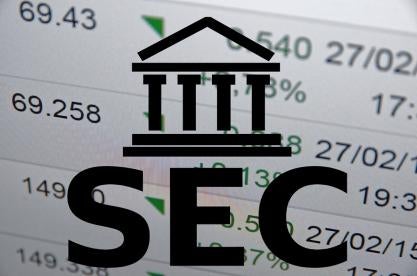As IPOs and other traditional paths to liquidity for private assets have become more challenging, GP-led secondary transactions have emerged as a powerful and popular tool across closed-end private funds, leading to explosive growth over the last five years. And while macro factors influence their prevalence year over year, these transactions remain broadly popular across the various stakeholders in these transactions, facilitating different goals for different parties:
-
Existing Investors (LPs): Near-term liquidity in a liquidity-constrained market, typically with an option to continue participation if desired
-
New Investors (Buyers): Access to a mature portfolio with unrealized upside
-
Fund Adviser (GP): Extended duration to capture future upside of well-performing assets, additional capital to support existing portfolio, and reset economics aligning with longer-term outlook
However, the increasing prevalence of these transactions has also drawn increasing regulatory scrutiny – along with increasing regulatory risks stemming from SEC criticism of perceived market practices and potential conflicts of interests in these transactions. In fact, the SEC recently emphasized these concerns in discussing the newly adopted reporting requirements for GP-led secondary transactions under Form PF.[1] It is therefore increasingly critical for fund advisers to be mindful of the SEC’s areas of concern when running a GP-led transaction. Advisers have one chance to get it right, and the stakes are increasing.
Fiduciary Concerns Implicated by GP-Led Secondary Transactions
The fiduciary duty standard that applies to all advisers covered by the Investment Advisers Act, whether or not SEC-registered, includes a duty of care and a duty of loyalty. Over the years, the SEC and its staff have expressed several different concerns potentially arising under GP-led secondary transactions implicating the duty of care and the duty of loyalty. For example, in discussing GP-led secondary transactions in the Form PF Adopting Release, the SEC noted that investors are often afforded “very short” timeframes in which to conduct diligence on, and to consider a decision to cash out or participate in, the proposed transaction.[2] The SEC also noted its focus on conflicts of interest posed by such transactions, “particularly those conflicts that arise because the adviser (or its related person) is on both sides of the transaction with potentially different economic incentives”.[3] The SEC also noted potential issues stemming from the nature of the consent being sought, in particular implying that approval by a fund’s limited partner advisory board may be insufficient to address potential conflicts of interest where the board is not representative of all investors.[4]
The SEC has a long history of noting similar concerns. For the past three years, the SEC’s Division of Examinations’ annual list of exam priorities has included GP-led restructurings, including stapled secondary transactions and continuation funds.[5] Further public commentary can be found dating back to 2015,[6] and the staff has been actively looking to bring enforcement actions in this area for at least that long. All of this draws scrutiny, which can translate into lengthy interactions with SEC staff. Even routine SEC exams can be time- and resource-consuming exercises, and the stakes only increase if a matter such as this evolves into an enforcement investigation. And all these risks will only increase for those advisers required to report these transactions under the new Form PF requirements, raising their chances of a near-term visit from the SEC.
To reduce their regulatory risk in GP-led secondary transactions, advisers should therefore be mindful of the SEC’s concerns by taking actions during the transaction in anticipation of the SEC’s likely future focus areas. This could include focusing on elements of the process and structuring of terms that might require additional disclosures for investors to understand how those elements could have influenced the terms being offered (such as the potential impact of stapled equity, or the lack of an auction process, on bid pricing), or elements of the consent process that might impact the sufficiency of that consent (such as a narrow window in which to consider and submit consents, or approval by a limited partner advisory board that is not representative of the fund’s investor base or whose members may have an interest in the outcome), or other elements of the process or terms that SEC staff could assert inure to one party’s benefit over another’s (such as terms that benefit buyers and rolling LPs over selling LPs, or the GP over LPs). In all respects, the completeness of any accompanying disclosures will be key, as will an ability to demonstrate that investors had a real opportunity to consider the complex mix of information and to make an informed, non-coercive choice. Getting it right during the transaction is what counts. Waiting until after it closes generally will be too late.
GP-led secondary transactions remain compelling for all stakeholders involved – LPs, Buyers, and GPs – and while the risks and costs imposed by future SEC scrutiny can be great if left untended, they can also be managed during the transaction through thoughtful processes, disclosures and consent that bear the SEC’s concerns closely in mind.
[1] “Amendments to Form PF to Require Event Reporting for Large Hedge Fund Advisers and Private Equity Fund Advisers and to Amend Reporting Requirements for Large Private Equity Fund Advisers”, SEC Adopting Release, May 3, 2023 (“Form PF Adopting Release”).
[2] Form PF Adopting Release at p. 64.
[3] Form PF Adopting Release at p. 62.
[4] Form PF Adopting Release at p. 64 (“some advisers seek advisory board consent for adviser-led secondary transactions, but such advisory boards are comprised of only the largest investors in the fund, and the adviser does not seek consent from the remaining investors”).
[5] See SEC Division of Examinations Examination Priorities for 2023-2021. See also “SEC Examinations in 2023 to Focus on “Riskier Private Funds” and New Marketing Rule”, Proskauer Rose LLP Alert, Feb. 15, 2023. See also Risk Alert, SEC Office of Compliance Inspections and Examinations, June 23, 2020, at p. 4 (noting that certain examined advisers “did not provide adequate disclosure about investor options during restructurings, potentially impacting the decisions made by investors”, and that other advisers “required any potential purchaser of investor interests to agree to a stapled secondary transaction or provide other economic benefits to the adviser without adequate disclosure about the conflict to investors”).[6] See “SEC Eyes Stapled Secondary Deals”, PE Hub, May 14, 2015 (quoting senior SEC exam staff member who questioned whether advisers pursuing stapled-secondary transactions were fulfilling their fiduciary duties by presenting investors with “two bad options”).







 i
i


